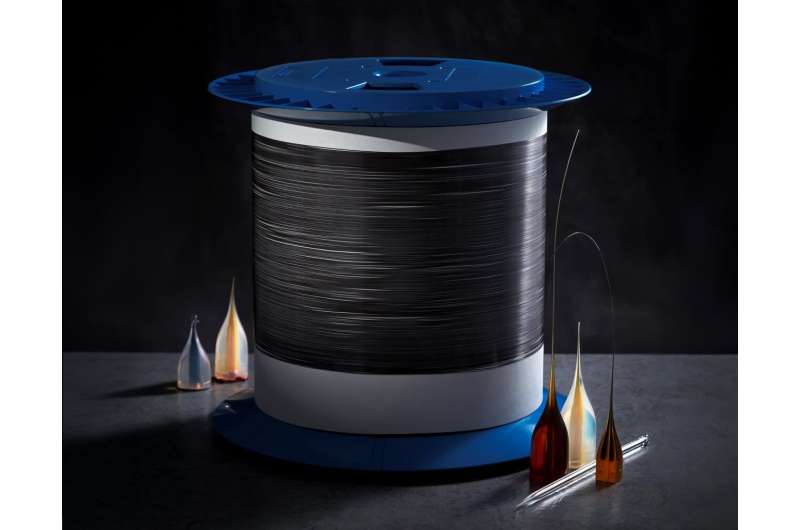
A team of engineers affiliated with a host of institutions in China and two in Singapore has developed a type of conductive fiber that can be woven into clothes to give them smart device capabilities. The study is published in Nature. Xiaoting Jia and Alex Parrott from Virginia Tech have published a News & Views piece in the same journal issue, outlining the work by the team on this new effort.
For several years, tech pundits have been claiming that the advent of smart clothing is just around the corner, but while advances have been made, no such technology has become mainstream. In this new effort, the research team claims to have created a fiber that could overcome the problems that have stymied researchers on other efforts.
The main challenge facing makers of smart clothes is the development of a bendable and stretchable fiber that remains conductive and able to withstand years of use and wash cycles. To overcome these challenges, the researchers in China developed a novel process for making a fiber to suit such needs.
The team began by first studying the properties of current semiconductor-based fibers designed for use in fabrics to find where the flaws lay. They then looked at other technology, such as glass used to make smartphone screens, to learn how to make glass that does not crack under duress. They created and tested a variety of fibers until they found one that passed all their tests. Making it involved first creating a semiconducting wire using silicon and then covering it with melted glass as it was pulled into a strand. The glass was then etched away and the wire covered with a stretchable and bendable polymer coating.
Testing showed that the resulting fiber could be stretched and bent in ways suitable for use in clothing. It could also be woven into existing fabrics, such as cotton, while maintaining its conductive abilities. The researchers made several products using their fiber, including a hat with the ability to sense traffic light colors and a wrist strap that monitors a wearer's heart rate. They also found that each of the test products continued to work as designed even after six months of use and washing.
The research team acknowledges that one big problem remains—the link between the embedded fibers and circuit board is less durable, and they found it tended to fail after just a few months.
More information: Zhixun Wang et al, High-quality semiconductor fibres via mechanical design, Nature (2024). DOI: 10.1038/s41586-023-06946-0
Xiaoting Jia et al, Flexible fibres take fabrics into the information age, Nature (2024). DOI: 10.1038/d41586-024-00076-x
© 2024 Science X Network
Citation: Engineers fashion strands of conductive fiber that can be woven into clothes (2024, February 1) retrieved 1 February 2024 from https://techxplore.com/news/2024-02-fashion-strands-fiber-woven.html
This document is subject to copyright. Apart from any fair dealing for the purpose of private study or research, no part may be reproduced without the written permission. The content is provided for information purposes only.
